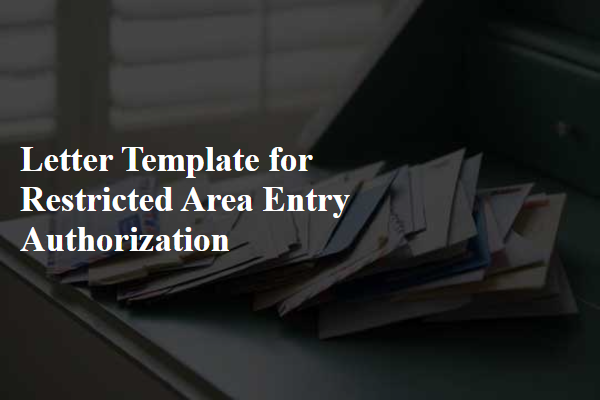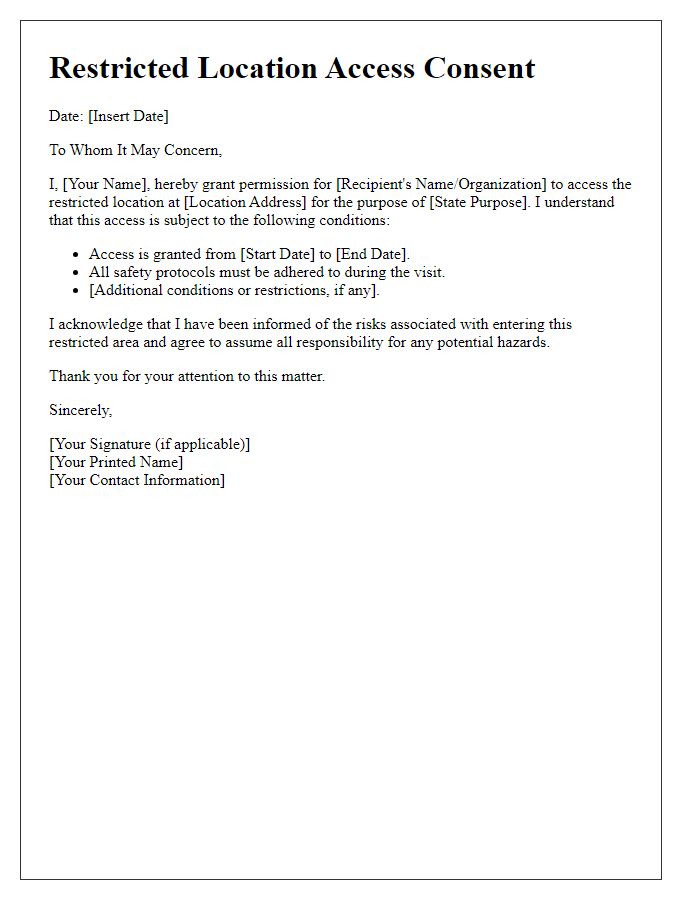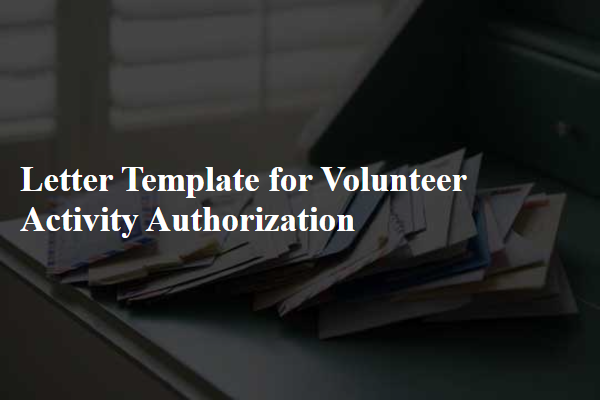Are you looking for a way to navigate the intricacies of restricted area entry? Writing a letter for authorization can be a crucial step in ensuring you gain the necessary permissions. It's essential to be clear and concise, highlighting your purpose and the importance of your request. Join us as we explore the key elements of crafting a compelling letter that will enhance your chances of approvalâread on for our detailed guide!

Applicant's Full Name and Identification Details
The entry authorization for restricted areas requires the applicant's complete name, including first name, middle name (if applicable), and last name, along with identification details such as a government-issued ID number, position title, and affiliation. Additional information may include the applicant's date of birth, and employment identification number, as well as the purpose of entering the restricted area, which could involve specific projects, security assessments, or operational tasks. Accurate documentation ensures compliance with safety regulations and facilitates verification of clearances required for access to sensitive locations such as military bases, research facilities, or hazardous material zones.
Specific Purpose and Duration of Access
Restricted areas, such as military bases, research facilities, or corporate security zones, often require specific access authorization. Access requests must detail the purpose, such as 'conducting maintenance' or 'performing inspections', alongside the duration of access, which may range from 'one-time entry' to 'ongoing access over six months'. This ensures compliance with security protocols and minimizes risks associated with unauthorized entry. Each access request should include the individual's identification and relevant certifications to establish credibility and accountability within sensitive environments.
Description of the Restricted Area
The restricted area, designated as Secure Zone Alpha, encompasses a vital section of the industrial complex located at 1234 Innovation Drive, Springfield. This zone includes critical infrastructure components such as the main data center, operational control room, and high-security storage facilities. Access is limited to authorized personnel only, ensuring protection of sensitive information, proprietary technology, and equipment valued at over $10 million. Surveillance measures include 24/7 CCTV monitoring and biometric entry systems specifically designed to prevent unauthorized access while maintaining a secure environment. Strict adherence to safety protocols is required within this area to mitigate security risks and ensure operational integrity.
Authorizing Official's Contact Information and Signature
Restricted area entry authorization requires explicit consent from designated authorities to ensure safety and security protocols are observed. The Authorizing Official's contact information typically includes their name, title, organization, phone number, and email address for direct communication regarding access. A signature must accompany the authorization to validate the request, indicating responsibility and acknowledgment of regulations governing the restricted area. This process is essential for maintaining oversight within sensitive locations, which may include military bases, research laboratories, or industrial facilities that handle hazardous materials.
Terms and Conditions of Access and Compliance
Restricted area access requires adherence to specific protocols designed to ensure safety and security. Authorized personnel must display valid identification cards (issued by the facility) at all times while present in the designated zones. Access is granted only between the hours of 8 AM and 5 PM, on weekdays, excluding holidays. Compliance with all safety regulations, including wearing personal protective equipment (PPE) such as hard hats and safety goggles, is mandatory. Any unauthorized individuals found within these areas will face immediate removal and potential disciplinary action. Additionally, regular drills and security checks are conducted to maintain a secure environment, and all personnel must attend mandatory briefings on emergency procedures bi-annually. Non-compliance may result in revocation of access rights and further legal repercussions.













Comments